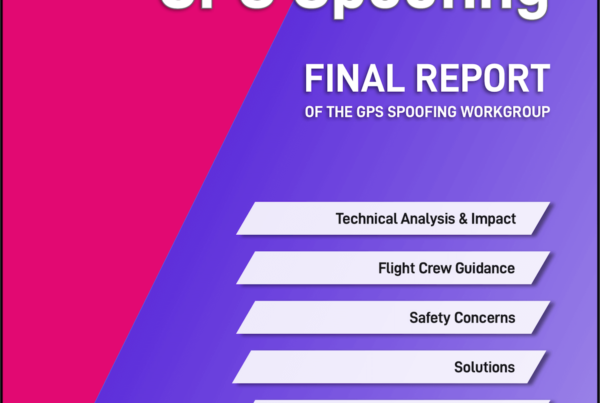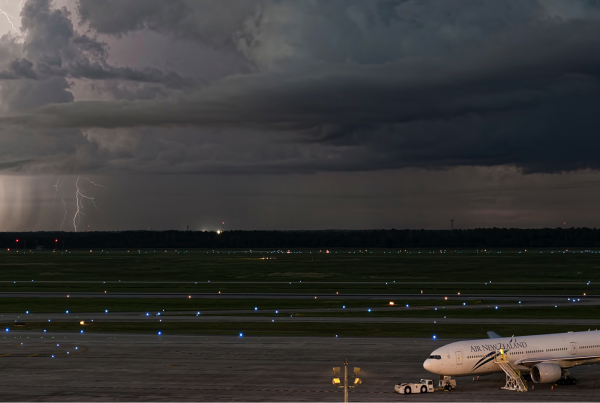59. If SELCAL isn’t functioning in Oceanic/Remote airspace. Can I continue the flight?
Yes, SELCAL meets the “Continuous listening watch” requirement of 14 CFR 91.511. If SELCAL is inoperative one of the pilots must listen on the appropriate enroute frequency for calls.
60. What document can pilots refer to find “Country or Region specific” information?
That country’s Aeronautical Information Publication is the source.Jeppeson reprints some of this information in the ATC Section of their publications. ICAO Document #7030 and FAA AC 90-70A are additional resources
61. Where would you find intercept procedures?
ICAO Annex 2, chapter 3, paragraph 3.8, and attachment Acontains guidance for international interception procedures. Appendix 1 of Annex 2 contains international interception signals. Further information is found in ICAO Document #4444, Section 15, Paragraph 15.5.1 and 15.5.2.
62. Is specific training required to be conducted in the area of Foreign ATC terminology and verbiage?
No. Recommended reading on this subject: ICAO Annex 10, Volume2. ICAO Document 9432, UK’s CAP 413 and the FAA’s Pilot/Controller Glossary
63. Define “Loop Error” and describe how you will guard against this risk.
Misunderstanding of clearance details between the pilot and the controller. This is one of the reasons that in the NAT pilots are required to report before leaving any altitude and upon reaching a new cruising altitude. NAT Document #007, Guidance Concerning Air Navigation in and above the NAT MNPSA Chapter 9, Paragraph 9.1.15
64. What should you consider doing when overtaking another aircraft that is 1000 feet below your altitude directly underneath your flight track?
An aircraft overtaking another aircraft should offset within the confines of this procedure, if capable, so as to create the least amount of wake turbulence for the aircraft being overtaken. NAT Document #007, Guidance Concerning Air Navigation in and above the NAT MNPSA Chapter 8, Paragraph 8.5.3
65. Briefly describe MNPS dimensions
“The vertical dimension of MNPS Airspace is between FL285 and FL420 (i.e. in terms of normally used cruising levels, from FL290 to FL410 inclusive). The lateral dimensions include the following Control Areas (CTAs): REYKJAVIK, SHANWICK, GANDER and SANTA MARIA OCEANIC plus the portion of NEW YORK OCEANIC which is North of 27°N but excluding the area which is west of 60°W & south of 38°30’N NAT Document #007, Guidance Concerning Air Navigation in and above the NAT MNPSA Foreword
66. When should we squawk 2000?
When reaching oceanic airspace, squawk 2000 and monitor VHF 121.5 and the air-to-air frequency 123.45. FAA AC 90-70A Chapter 5, Paragraph 5.5
67. Briefly describe the cockpit set-up for VHF radios (121.5, 123.45) in Oceanic/Remote airspace.
When reaching oceanic airspace, squawk 2000 and monitor VHF 121.5 and the air-to-air frequency 123.45. FAA AC 90-70A Chapter 5, Paragraph 5.5
68. Is a master clock required to be designated in Oceanic/Remote airspace?
Yes. NAT Document #007, Guidance Concerning Air Navigation in and above the NAT MNPSA Chapter 8, Paragraph 8.2.2 FAA AC 90-70A Appendix 2 Paragraph 2
69. What is the allowable Track and Distance difference, from each waypoint displayed in the FMS vs. Master Document?
2-3 degrees and 1-2 NM. These small differences are there due to the individual FMS calculations of track and distances vs. flight planning computers calculation. Larger differences need to be investigated and resolved. NAT Document #007, Guidance Concerning Air Navigation in and above the NAT MNPSA Chapter 8, Paragraph 8.3.18
70. When should we give a new ETA?
Time Error. Occurs when an aircraft’s reported actual time of arrival (ATA) is more than 3 minutes before or after the estimated time of arrival (ETA). (For North Atlantic (NAT) the criteria are 3 minutes or more.) FAA ORDER 7110.82D Effective Date: 06/03/09
71. Generally speaking, how many minutes prior to entering Oceanic/Remote airspace, should you have the Oceanic Clearance?
It is recommended that pilots should request their Oceanic Clearance at least 40 minutes prior to the Oceanic entry point ETA except when entering the Reykjavik area from the Scottish or Stavanger areas, then the clearance should be requested 20 minutes before the Oceanic entry point ETA. NAT Document #007, Guidance Concerning Air Navigation in and above the NAT MNPSA Chapter 5, Paragraph 5.1
72. What defines a Gross Navigation Error GNE?
GNE. Lateral errors of 25 nautical miles (NM) or more from the aircraft’s cleared route. FAA ORDER 7110.82D Effective Date: 06/03/09
73. What defines a Large Height Error?
Height Error. Errors of 300 feet or more from a clearance altitude. FAA ORDER 7110.82D Effective Date: 06/03/09
74. What defines a Time Error?
Time Error. Occurs when an aircraft’s reported actual time of arrival (ATA) is more than 3 minutes before or after the estimated time of arrival (ETA). (For North Atlantic (NAT) the criterion is 3 minutes or more.) FAA ORDER 7110.82D Effective Date: 06/03/09
75. Briefly describe 14 CFR 91.703
When over the high seas, comply with annex 2 (Rules of the Air) to the Convention on International Civil Aviation and with 91.117(c), 91.127, 91.129, and 91.131; When within a foreign country, comply with the regulations relating to the flight and maneuver of aircraft there in force.
76. Do I need a French Crew visa?
Travel to France on the continent of Europe does not require an Schengen visa for crewmembers. France also has 4 overseas departments that are wholly integral parts of France and considered equally among the country’s 28 regions. The Overseas Departments (département d’outre-mer, or DOM) include Guadeloupe (Le Raizet- TFFR), Guyane (Cayenne-Rochambeau- SOCA), Martinique (Le Lamentin- TFFF) and Reunion (Saint Denis- FMEE). However, the Schengen visa does not apply to the Overseas Departments. There is a specific visa for visits to DOM. Details regarding all French visas can be found @ the French Embassy website.
http://www.consulfrance-washington.org/spip.php?rubrique98
77. Explain the term “SLOP” the procedure for applying it.
Strategic Lateral Offset Procedure. Aircraft can fly in automatic mode 1 or 2 N.M. to the right of centerline of the cleared course. Position reports are given as if you are crossing the actual waypoint. When entering and exiting oceanic airspace you must cross the actual waypoint.ICAO Doc#4444, Chapter 16, Paragraph 16.5″
78. If an aircraft is required to deviate from track to avoid adverse meteorological conditions and a prior clearance cannot be obtained, what are the PIC responsibilities?
Alert other near by aircraft, turn on exterior lights, if more than 10 N.M. off course and flying eastbound then descend 300’ if north of course or climb 300’ if south of course; if westbound then climb 300’ if south of course and descend 300’ if north of course. ICAO Doc#4444, Chapter 15, Paragraph 15.2.3
79. How do I locate RVSM monitoring flight information on the FAA web site?
The FAA RVSM Approvals page link is: http://www.faa.gov/air_traffic/separation_standards/naarmo/rvsm_approvals/Look under International General Aviation “IGA”
80. What are the requirements for carrying and using an oceanic plotting chart?
There is no specific regulatory requirement for plotting charts. Check your specific operations approval documents for details on your operation. The requirement is to be able to reliably fix your position and cross-check navigation information. AC 91-70A Para 3.6
81. How many aircraft within a fleet must have completed a RVSM monitoring flight to satisfy the European requirement?
Group approved and indicates data indicates RVSM compliant, 2 Aircraft per fleet. Group approved with insufficient data or Revs compliance, 60% or airframes Non group aircraft, 100% of airframesICAO Annex 6, Part I, Para. 7.2.7, Part II Para. 2.5.2.7 http://www.ecacnav.com/content.asp?PageID=65
82. What is a Journey Log Book?
A Journey Log Book shall be maintained in respect of every aircraft engaged in international navigation. In this log shall be entered particulars of the aircraft, crew and each journey. Recommended items are aeroplane nationality, registration, date, crew names and duty assignments, departure and arrival times and points, purpose and observations of the flight, PIC signature.ICAO Article 29, 34, ICAO Annex 6, Part 1, Paragraph 11.4
ICAO Annex 6, Part 2, Paragraph 2.8.2
83. How does a U.S. operator satisfy the requirement for a Journey Log Book according to the FAA?
The term logbook in this context means a navigation log and/or plotting chart that may be kept in the form of electronic data. This record should be maintained for 6 calendar months following the flight.FAA Order 8900.1 Volume 4, Chapter 12, Paragraph 4-1299 c
84. How do I determine if a country is WGS 84 compliant?
The specific country’s Aeronautical Information Publication, AIP will list this information. An FAA approved source for this information may be found at: http://www.jeppesen.com/company/publications/wgs-84.jsp”
85. What is the difference between the RNAV Specification and the RNP Specification for airspaces based on Performance Based Navigation?
RNAV specifies navigation accuracy only. RNP specifies navigation accuracy, alerting and monitoringICAO Doc# 9613, “Executive Summary”
86. Is it legal to carry fireworks onboard a part 91 flight?
They are a HAZMAT, Class 1.3 or 1.4 explosive ground transport only. 49 CFR 172.101
87.When are passengers entering the United States on a Part 91 flight required to have a visa?
US Citizens do not require a visa. Non-US citizens require a visa if; they are not a citizen of a country that the US permits a waiver from. The Visa Waiver Program (VWP) and The Electronic System for Travel Authorization (ESTA) is what we are speaking of here. Frequently Asked Questions about the Visa Waiver Program and the Electronic System for Travel Authorization
http://www.cbp.gov/xp/cgov/travel/id_visa/business_pleasure/vwp/”
89. What is the meaning of listing airport elevation in hPa on some Jeppesen approach plates?
It is the difference between field elevation and the altitude. Another way of stating this; this is the Barometric pressure equivalent for QFE at airports with altimeter setting in hPa or Mb.Jeppesen Introduction Section, Page #103″
90. Are there fuel remaining requirements from and Equal Time Point to the diversion airport?
For private operators, there are no regulatory requirements for fuel remaining at ETP of oceanic/remote diversion airports. Commercial operations or Extended Range (ETOPS) do have specific planning requirements.AC 91-70a and AC 120-42b, UK CAP 513″
91. What are the requirements to become approved for RNP-4?
Long-range navigation systems capable of RNP-4 navigation are required for the LOA/OpSpec to be issued. To use RNP-4 in a 30/30NM separation standard ADS-C and CPDLC will be requiredPBN-BASED RNP 4 JOB AID, 5/6/09 FAA Order 8400.33, 9/15/05″
92. I’ve recently heard a pilot mentioning a requirement for “”Aircraft operating certificate in Europe” For Part 91 Operations, do we need to compile with this regulation to operate in Europe?
An AOC is not a requirement for an FAA Part 91 General Aviation operation. A change to ICAO Annex 6 in 2010 requires an AOC be in a standardized format and Certified True Copy for commercial operations. This may be part of the confusion.There is an FAA Info to Operators that describes this in detail. InFo#09019 dated 12/1/09. The key is to prove to a foreign inspector that your operation is GA vice commercial. There is an AC that helps. AC 120-12A dated 4/24/86 describes what defines “”Commercial Operations”.
93. I thought that with ADS-C the aircraft was sending position reports to a ground station (once logged on) Why do I have to make HF radio calls?
HF radios would be used to voice report position, maintain a back-up to CPDLC. SELCAL would also have to be checked for functionality.Global Operational Data Link Document (GOLD) Chapter 5, Paragraph 5.1.3.7
140. Where in the world does RNP 4 airspace exist?
RNP-4 is used in support of 30/30NM separation in the SOPAC.FAA Order 8400.33, 9/15/05
94. Does a Part 91 operator require a LOA or specific training to conduct operations in the Polar region?
No LOA nor specific training is required for a Part 91 operator to conduct Polar operators. However, specific navigation authorization is required for commercial operators.FAA Order 8900.1 Vol.4, Chap.1, Sec.2, Para 4-24″
95. Where in Annex 6 does it state that an ELT must operate on 406 MHz?
ICAO does not have a requirement for a specific ELT transmitter. Annex 6 describes how many and if automatic or not, Annex 10 describes specifications for the actual transmitter. An individual country’s Aeronautical Information Publication, AIP will state the requirement for Either 121.5 or 406MHz transmitters.ICAO Annex 6, Part I, Para. 2.4.12 ICAO Annex 10 Volume III, Part II, Chapter 5.”
96. Do the North Atlantic Region lost communications procedures apply in the WATRS Plus airspace?
No, the Western Atlantic Area is a different designation than NAT/MNPS. You are expected to comply with ICAO Doc#4444, Chapter15 while in the WATERS Plus area.The US NOTAMS, International section describes this in detail and can be found at: http://www.faa.gov/air_traffic/publications/notices/”
97. Where would you look for the route information if cleared on the following clearance in Canadian Airspace, FOXXE N26A SPOTE N28A MT N32A SSM?
This is a combination of three different North American Routes. These routes are described in general terms in theNAT Document #007 and in detail in the FAA’s Northeastern Facilities Directory or the Canadian Flight Supplement.
98. Is it possible to do CPDLC with AFIS?
No. These are two separate and distinct communication protocols.Global Operational Datalink Document, GOLD Chapter 3, Paragraph 3.1
99. Can I pass position reports via AFIS?
No. But, FMS Waypoint Position Reporting (FMS WPR) is available in the NAT with approval from the specific OCA.Nat DOC#007, Paragraph 6.1.20
100. When accomplishing a position accuracy check, the FMS position should be checked against what navigation sources?
A ground based NAVID such as a VOR/DME or a RADAR position plot from ATC.AC91-70a, Chap.10 and NAT Doc. 007 Para. 8.4.9
More on the topic:
- More: OPSGROUP is hiring! Wanted: Junior International Ops Specialist
- More: LOA Guide for US Operators
- More: NAT Ops: Flying the Blue Spruce Routes
- More: EU-LISA: New Europe Travel Requirements, the BizAv Guide
- More: NAT Guide 2025 – My First NAT Flight is Tomorrow
More reading:
- Latest: OPSGROUP is hiring! Wanted: Junior International Ops Specialist
- Latest: LOA Guide for US Operators
- Latest: NAT Ops: Flying the Blue Spruce Routes
- Safe Airspace: Risk Database
- Weekly Ops Bulletin: Subscribe
- Membership plans: Why join OPSGROUP?











 Get the famous weekly
Get the famous weekly 




